Header logo
header top contact widget
Tooth Replacement
Cracked & Broken Teeth A ‘Sign of the Times’
Posted on Jan 06, 2022 by William J. Claiborne, DDS MS
As a periodontist in Asheville NC for over 25 years, I’ve seen my fair share of teeth that have been removed or need removal. Most of these teeth, based on national statistics, are lost due to damage caused by periodontal (gum) disease.
Yet, in more recent years, I’m seeing people lose teeth due to broken or fractured teeth.
In my dental specialty, I have advanced skills in the treatment of gum disease as well as in the diagnosis and placement of dental implants. As the ideal option in tooth replacement, dental implants restore the stability and dependability of natural teeth.
So, it stands to reason that a lost tooth is best replaced by a dental implant. But, why are more and more individuals losing teeth due to fractured, cracked or split teeth?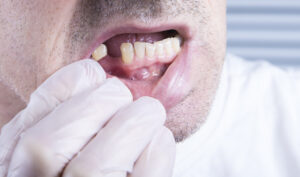
It’s becoming more common to hear that dentists are treating more cracked teeth since the beginning of the pandemic. A recent survey shared by the American Dental Association (ADA) reported that over 70 percent of dentists surveyed (nearly 2300) saw an increase in patients who had experienced night-time clenching and grinding of teeth, or ‘bruxing’. These problems have typically been the result of bite misalignment, which interferes with the harmonious congruity of upper and lower teeth while eating or speaking.
When a tooth breaks or fractures below the gum line, it requires removal (in most cases) since the above-the-gum structure is generally insufficient to support a crown. As a periodontist, another area of the periodontal specialty is crown lengthening.
This procedure is often performed prior to the placement of crowns to correct the height of the gum arch that borders teeth. This is especially common for patients who have a ‘gummy smile,’ or too much gum area visible above upper teeth when in a full smile.
However, in cases where a tooth breaks, crown lengthening is sometimes performed to alter the surrounding gum tissues and expose enough tooth structure to support a crown. The benefit of this is the patient is able to avoid having the tooth removed and endure the many decisions (and costs) involved to replace it.
Pandemic stress, quarantine fatigue, mask burnout, a succession of variants, less social involvement, and general stress overload has become a global problem. Although stress is experienced by different people in different ways, it is not uncommon for it to be revealed through dental issues.
Many people hold stress and tension in their jaw muscles and jaw joints. This is why, during relaxation phases in a yoga class, it’s common for the instructor to encourage participants to relax their jaw muscles. Since the onset of the COVID-19 pandemic, stress is causing an unusually higher rate of oral health problems.
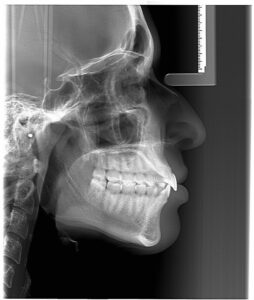
Based on the ADA survey, about 60 percent of responding dentists shared an increase in patients who clearly cite stress as the culprit for tooth damage. Thus, dentists have seen significant increases (up 63 percent) in chipped teeth, and about the same percentage of increases for cracked teeth and temporomandibular joint (TMJ) disorder symptoms, which includes headaches and jaw pain.
If you are experiencing problems regarding stress held in the jaw joints, here are a few tips that may help lessen the load:
• Walk away from the computer an hour before bedtime.
• Relax with a warm shower or play soothing music.
• Relax your jaw joints by putting your lips together, teeth apart, and resting your tongue behind front teeth or the roof of the mouth.
• Ask your dentist about a custom-designed night guard to protect your teeth from night-time clenching or grinding.
If the worst has occurred – losing a natural tooth – the best way to replace it is with a dental implant.
Dental implants recreate stimulation to the jaw bone, thereby halting the pace of bone loss. When bone mass is maintained, neighboring teeth have a reduced risk for being lost as well. Because dental implants are held in the jaw bone, they are also able to restore a natural biting strength with dependable stability.
There are many advantages to having dental implants, including the longevity. When dental implants are properly selected, placed and maintained, they should last your lifetime. This is why it’s so important to have your implant treatment through a Periodontist.
A periodontal specialist has advanced training and skills in the diagnosis and placement of all types of dental implants. He or she can enhance your ability to enjoy this superior tooth replacement option for a lifetime of confident, healthy smiles.
In our beautiful Asheville periodontal dental office, we offer the most advanced technology in dentistry. Additionally, oral and IV sedation (‘twilight sleep’) are also available for optimal patient comfort.
To learn more, call 828-274-9440. If preferred, you can begin with a consultation appointment. New patients are always welcome and a referral is not needed.
Replace Teeth With Dental Implants Makes Good Sense
Posted on Nov 16, 2021 by William J. Claiborne, DDS MS
There’s a reason your general dentist is so determined to help you keep your natural teeth. When he or she recommends a crown (‘cap’) on a tooth to prevent potential removal (at the time or in the future), it is because a lost tooth is problematic in many ways.
First, the portions of teeth you see above the gum line stay in stable position because of the roots that hold it. Tooth roots (think “legs”) are supported by the upper or lower jaw bone. Larger teeth may have four roots. Some of the smaller teeth have only one.
These roots are beneficial to the health of the jaw bones. Tooth roots are connected to the jaw bone by veins and nerves that run from the tooth’s interior and out the bottom of each root leg. These vessels carry blood to the bone while providing a sort of stimulation that helps the bone to maintain its mass.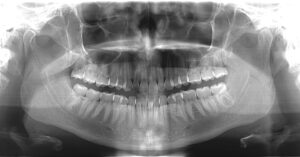
Think of the stimulation that tooth roots provide to how you might muscle atrophy. We all know that muscles, not used, will shrink in mass. When the jaw bones are lacking stimulation by the tooth roots they’re designed to hold, bone mass begins to decline.
Bone loss is the reason for a long line of problems. When bone loss occurs next to an area where natural teeth are held, those teeth are most likely to be the next to be lost.
When bone loss begins, it accelerates with each passing year. And eventually, a shrinking jaw bone reveals itself in changes in facial appearance. Initially, there may be deep wrinkling around the mouth. The corners of the mouth turn downward. Jowls form and the chin becomes more pointed.
As bone loss becomes more severe, the mouth seems to sink into the face. The nose and chin get closer, giving a “granny look”. The thin jaw bone is also more vulnerable to breaks.
Bone loss is what causes a change in how partials and dentures fit. As the bone height declines, the denture or partial becomes less secure from the declining bone shape to which it was designed to fit. More-frequent applications of pastes and adhesives are needed. Relines help but only temporarily.
Teeth also serve to support neighboring teeth. Each tooth keeps the ones on either side and above (or below) in proper position. This supports the “bite” alignment. A misaligned bite (how upper teeth fit and interact with lower teeth) can result in teeth that become chipped, worn or fractured.
Bite misalignment can also lead to TMJ disorder. The TMJ are your jaw joints, which hinge the lower jaw to the skull. When a misaligned bite causes stress or strain on these joints, the result can be headaches, sore jaw joints, ear ringing, vertigo, difficulty opening the mouth fully, and sore muscles in the face, neck and shoulders.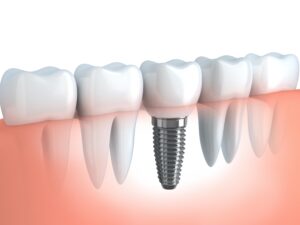
The reason we advise replacing teeth with dental implants are many:
1). A dental implant recreates the presence of a natural tooth. It provides stimulation to the bone, halting the process of bone loss.
2). Dental implants do not rely on neighboring teeth for support, as in a crown-&-bridge combination. The crowning of bordering natural teeth to support a bridge is not needed. Thus, the integrity of surrounding teeth is protected.
3). Because dental implants are supported by the jaw bone, sturdy and dependable biting and chewing strength is restored. Eating a healthy diet of all the foods you love is again possible.
4). Dental implants come in many sizes and shapes, each system designed to accommodate various needs and preferences. This means your implant can be chosen to suit your long-term goals.
5). Dental implants have an extremely high success rate, higher than any implant-in-bone option.
6). Dental implants are designed to last a lifetime. With proper selection and maintenance, they will never need replacing or repair. This makes them an excellent investment.
A periodontist is a dental specialist who is skilled offers an advanced understanding when it comes to oral tissues as well as dental implants. The advantages of a periodontist in dental implant selection and placement are many.
A periodontal specialist is trained to understand the intricate concepts involved in selecting the proper type of implant and skilled at placing implants at proper depths and angles. A periodontist is also able to optimize patient comfort during treatment and throughout the healing phase.
Using his or her advanced training in the diagnosis and placement of dental implants, a periodontist can help you enjoy a higher potential for dental implant treatment that lasts a lifetime.
In our Asheville periodontal dental office, we offer some of the most advanced technology available. This technology, combined with our advanced skill level, can help you enjoy a comfortable, efficient experience that allows you to have optimal success.
To learn more, call our office at: 828-274-9440 to request a consultation. Or, begin with an initial periodontal examination.
Postponing Dental Care Can Be Expensive
Posted on Sep 29, 2021 by William J. Claiborne, DDS MS
Most of us have seen the movie, “Gone With The Wind,” It’s pretty hard to forget the last line of Scarlet O’Hara: “I’ll think about that tomorrow.”
Procrastination is something we all do, some more than others. We all tend to “back burner” things we don’t want to do. As a periodontal dental specialist, I’m guilty of this on occasion.
However, I see a number of patients who have developed periodontal (gum) disease because they delayed or postponed dental care; care that would have easily helped them avoid the problems associated with it.
The reason 6-month dental check-ups are so beneficial is in their ability to give patients a twice-a-year clean slate in oral wellness. During this time, the dentist and hygienist can examine the mouth for signs of abnormal wear, bite alignment, and point out areas that need extra attention in oral hygiene routines at home. (This is especially true for people who have crowded or crooked teeth, as bacteria can easily accumulate in these tight angles.)
This dental appointment also allows the hygienist to remove plaque or tartar that has formed since the patient’s last check-up. Both are accumulations of oral bacteria, which will continue to reproduce rapidly without regular removal.
Plaque starts the process. It is the sticky film you probably feel on teeth when you first wake up. This film is actually a layer of bacteria that has rapidly reproduced during the night. (If you snore or breathe through your mouth during sleep, oral dryness can accelerate the rate of reproduction even more.)
Although it is more obvious on teeth, the film of plaque also coats the gum tissues and tongue. If not thoroughly removed within 48 hours, these bacteria amass to such a level that the plaque hardens. This is known as tartar.
Tartar typically forms between teeth and at the base of teeth. This is why daily flossing is helpful. It scrapes off plaque in areas the toothbrush may not reach, or may not be cleaning sufficiently.
Once tartar forms, however, it can no longer be removed by brushing and flossing. This is what the hygienist is picking at and scraping off teeth during dental cleanings. If not removed, these bacterial colonies continue to grow. And bacteria breed at an amazingly fast pace.
Just how quickly can these oral bacteria amass?
According to information shared by RDH Magazine: (https://www.rdhmag.com/infection-control/water-safety/article/16404976/oral-bacteria-how-many-how-fast)
“some species of oral bacteria can double their numbers every 20 minutes under ideal conditions in a Petri dish.”
This means that one million bacteria can grow to 14 million within an hour. Accumulated bacteria can even be seen in the mouth as a white coating on the tongue. The back of the tongue is typically whiter in color since tooth brushing doesn’t reach there and dislodge embedded bacteria. (This is why it’s important to brush your tongue every day when toothbrushing, or use a tongue scraper.)
Tartar holds such a high number of bacteria that these organisms can cause damage to teeth. They bore into tooth enamel and eat away at oral tissues.
Bacteria are ramped up by foods we eat. They especially love lingering food particles caught between teeth and foods containing sugar. (This is yet another reason to floss daily.)
Initially, gum disease causes tender gums that may be swollen. They may bleed when brushing, which is typically noticed when spitting. Symptoms may also include frequent bad breath, gums that are more red in color than a healthy pink, and soreness when brushing or flossing.
Keep in mind, this is just the beginning. This stage is known as Gingivitis and is just a prelude of what’s to come. If prompt measures are taken as soon as these symptoms arise, Gingivitis may be overcome without requiring dental treatment. Thorough brushing (twice a day, at least), daily flossing, and keeping the mouth moist with plain water may be effective in overcoming Gingivitis.
If not resolved, Gingivitis can progress to periodontal disease. During this level of gum disease, breath odor is persistently bad. The gums bleed easily when brushing and are more red in color. Gums are sore and tender. As the disease worsens, the gums become spongy and pus pockets may form at the base of teeth.
Eventually, the bone tissues and gums become so damaged by periodontal bacteria that some teeth may loosen. This stage is periodontitis and is an infectious disease that can cause devastation far beyond the mouth.
Periodontal disease is the nation’s number one cause of adult tooth loss.
These potent bacteria can enter the bloodstream, creating inflammatory reactions that can activate or worsen a number of serious health problems. These include heart disease, stroke, high blood pressure, diabetes, arthritis, preterm babies, some cancers, impotency, erectile dysfunction, and Alzheimer’s disease.
That’s a pretty serious list. As research continues to study the far-reaching effects of these infectious bacteria, the list seems to lengthen more.
Have you been putting off dental care? Treating advanced gum disease and replacing teeth are both pretty involved procedures.
In many cases, I’ve found patients avoid or delay dental care due to feeling it is too expensive or having fear associated with dental visits. Yet, the price (in time and money) from not properly caring for oral health is steep in many ways.
The devastation caused by these bacteria can be easily avoided with simple measures at home and 6-month dental visits. An at-home dental care regimen should only require about 5 minutes per day. A dental check-up usually takes about an hour.
If you are very uncomfortable during dental cleanings, tell your hygienist. He or she may be able to provide a pre-treatment rinse or a topical swab for more sensitive areas. (Just know that until your gums get into healthier shape, it is the inflammation caused by oral bacteria that makes them more sensitive.)
The obstacles that typically prevent patients from receiving the care they need are:
Cost: Most dental practices offer payment plans that are interest-free with no down payment required. If you don’t have dental insurance, ask about any discounts they may offer or consider using a credit card.
Dental fear: In our Asheville periodontal dental office, we offer both oral and I.V. sedation (“twilight sleep”), if desired. We understand that many adults have anxiety or fear when it comes to dental treatment. Our entire staff is committed to providing all patients with a gentle touch, a respectful environment, and compassionate care.
Embarrassment or feeling a smile is “hopeless”: We see many adults who have “bombed out” mouths. This can happen for a number of reasons. Here, we are a “judgement-free” perio office and treat every patient as we would want our loved ones treated. And, no smile is hopeless. We have a great many patients who are testaments to that!

For patients who have lost natural teeth, for whatever reason, a periodontist has advanced skills in the diagnosis and placement of dental implants. Once your gums are restored to a healthy state, we can discuss that tooth replacement option, if you like.
As with most things in life, delaying care is a sure recipe to get deeper in the problem. Be committed to your daily oral care routine and keeping regular dental appointments. If you are having symptoms associated with any stage of gum disease, however, I am a dental specialist in treating even advanced levels.
Call 828-274-9440. A referral is not needed.
Dental Implants Not ‘One Size Fits All’
Posted on Sep 21, 2021 by William J. Claiborne, DDS MS
A periodontist specializes in the diagnosis and placement of dental implants, in addition to the treatment of all stages of periodontal disease.
For people who are considering dental implants to replace teeth, this level of expertise provides greater reassurance of successful treatment outcomes. A periodontist can also offer patients with a wider choice of implant systems.
How can patients have more dental implant options through a periodontist?
When general dental offices offer dental implants, some general dentists offer implant selection and placement along with the restoration of the implant. (“Restoration” refers to the replacement crown that is attached to the implanted portion.)
Although generalists complete training in dental implants, most courses are offered by particular implant manufacturers. This means that the course focuses on the systems available through this one maker, which may or may not include the one most appropriate for your individual needs.
This is why most generalists refer the placement portion to a periodontal specialist. For their patient, this can mean a higher level of success, especially for complex needs.
For example, a patient who is missing a lot of bone mass (due to missing natural teeth for many years) benefits from the specialized skills of our Asheville periodontal office. A periodontist can incorporate bone rebuilding procedures into treatment to a proper depth. This specialist can help to restore bone that has occurred in the mandible (lower jaw) or maxilla (upper jaw), which may also require a sinus lift.
Another example is a patient who has lost teeth due to periodontal (gum) disease. Because a periodontist combines advanced skills in treating gum disease as well as in dental implants, these patients have an added advantage when it comes to treatment success.
For many reasons, dental implants have become the preferred tooth replacement option. There are over 40 different implant systems, each designed to accommodate various challenges and preferences. Some of the more common types include:
Traditional Dental Implants: In this process, dental implant treatments is done in a couple of stages. In the first stage, placement of each implant is performed. This involves small incisions in pre-selected placement points. In our Asheville periodontal dental office, these points are determined through computerized imaging, taking the guesswork out of the depth and angle of each implant placed. Once the implant is in proper position, the gum tissue is closed over the implant sites.
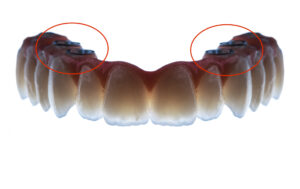
Several implants can often hold a full arch of teeth
The second stage involves a “healing period” of 3 – 6 months. During this phase, the bone grows around the implant(s) to secure each in place. The patient’s denture or partial denture can be comfortably worn during this time. This process is known as osseointegration, which describes the jaw bone growing around the implanted portion. This is what secures the implant so it provides stable, dependable biting and chewing strength.
After osseointegration is complete, the implant sites are uncovered and a post is positioned in the implant’s interior. Onto the posts, replacement teeth are attached. Once the final teeth are secured, patients can enjoy their confident smile along with the biting and chewing comfort like that of natural teeth.
Non-Removable Teeth Attached To Implants: In the past, the more affordable ‘full arch’ systems were typically those designed to support removable teeth. (An ‘arch’ is a full arrangement of all upper or all lower teeth.) However, some people feel removable teeth are too similar to the denture they wish to replace. Although firmly secured, the chore of having to remove teeth to clean them is a task many people want to eliminate.
A number of affordable implant systems are now available, designed to provide non-removable options that are more affordable. For example, the All On 4 dental implant system is made to support non-removable teeth on just 4 implants. With the implanted portions placed at unique angles, these longer implants can fully distribute biting and chewing forces. Another advantage of All On Four is their ability to be placed in minimal bone.
This is good news for people who are long-time denture wearers and were told they have too little bone to support implants. Or, they may have been advised to have bone grafts to rebuild the bone to an adequate height. This adds time and expense to implant treatment. Often, the All On 4 design is able to overcome this obstacle.
‘Same-Day’ Dental Implants: Advancements in dental implant systems and technology have evolved into implant placement and teeth attachment that can be accomplished in a single day. Some implant designs can position implants in the jaw bone in a way that they are able to support replacement teeth immediately.
With the replacement teeth created prior, the teeth may be attached without delay. In some cases, a previously-made denture or partial can be reconfigured to attach to newly placed implants. However, mounting replacement teeth to a just-placed implant isn’t wise for certain situations. This option should be diagnosed and performed by an experienced, skilled and highly-trained dental specialist in order to achieve a successful outcome. While “same-day” procedures can sound appealing, choose care where your individual needs are a priority.
Modern implant dentistry is successful, safe, dependable and can provide nearly immediate benefits. Our office enjoys a reputation for being on the cutting edge of implant dentistry’s techniques, technology and materials. This assures our patients of care that minimizes discomfort and treatment time while optimizing their final results.
Dental implants are designed to last a lifetime, making them an excellent investment. They are the closest thing to the natural teeth you once had, restoring the ability to bite, chew, speak and laugh confidently.
Over the years, I have been a witness to the transformations many implant patients undergo after treatment. They seem to smile and laugh more, become more social, and focus on their oral and overall health to a greater extent.
The type of dental implant best suited for you can be determined after an examination and review of x-rays (we use Cone-Beam digital imaging). Call 828-274-9440 to begin with a private, no obligation consultation to discuss your best options.
Please know that, if cost is a concern, payment plans can help you enjoy your beautifully restored smile while making easy monthly payments. Too, in many cases, an implant is not needed to replace each missing tooth. Often, when several teeth are missing in one area, one or two implants can support a “bridge” of several teeth. This curtails the treatment costs by reducing the number of implants needed.
If dental fear or anxiety is a concern, please mention this during our consultation. In our Asheville office, our entire team strives to provide a respectful, compassionate environment. We offer oral and I.V. sedation (twilight sleep) for nearly any procedure as well as a gentle touch at every visit.
Recent Posts
Categories
Archives
- September 2024
- August 2024
- July 2024
- June 2024
- May 2024
- April 2024
- March 2024
- February 2024
- January 2024
- December 2023
- November 2023
- October 2023
- September 2023
- August 2023
- July 2023
- June 2023
- May 2023
- April 2023
- March 2023
- February 2023
- January 2023
- December 2022
- November 2022
- October 2022
- September 2022
- August 2022
- July 2022
- June 2022
- May 2022
- April 2022
- March 2022
- February 2022
- January 2022
- December 2021
- November 2021
- October 2021
- September 2021
- August 2021
- July 2021
- June 2021
- May 2021
- April 2021
- March 2021
- February 2021
- January 2021
- December 2020
- November 2020
- October 2020
- September 2020
- August 2020
- July 2020
- June 2020
- May 2020
- April 2020
- March 2020
- February 2020
- January 2020
- December 2019
- November 2019
- October 2019
- September 2019
- August 2019
- July 2019
- June 2019
- May 2019
- April 2019
- March 2019
- February 2019
- January 2019
- December 2018
- November 2018
- October 2018
- September 2018
- August 2018
- July 2018
- June 2018
- May 2018
- April 2018
- March 2018
- February 2018
- January 2018
- December 2017
- November 2017
- October 2017
- September 2017
- August 2017
- July 2017
- June 2017
- May 2017
- April 2017
- March 2017
- February 2017
- January 2017
- December 2016
- November 2016
- October 2016
- September 2016
- August 2016
- July 2016
- June 2016
- May 2016
- April 2016
- March 2016
- February 2016
- January 2016
- December 2015
- November 2015
- October 2015
- September 2015
- August 2015
- July 2015
- June 2015
- May 2015
- April 2015
- March 2015
- February 2015
- January 2015
- December 2014
- November 2014
- October 2014
- September 2014
- August 2014
- July 2014
- June 2014
- May 2014
- April 2014
- March 2014
- February 2014
- January 2014
- December 2013
- November 2013
- October 2013
- September 2013
- August 2013
- July 2013
- June 2013
- May 2013
- April 2013
- March 2013
- February 2013
- January 2013
- December 2012
- November 2012
- October 2012
- September 2012
- August 2012
- July 2012
- June 2012


